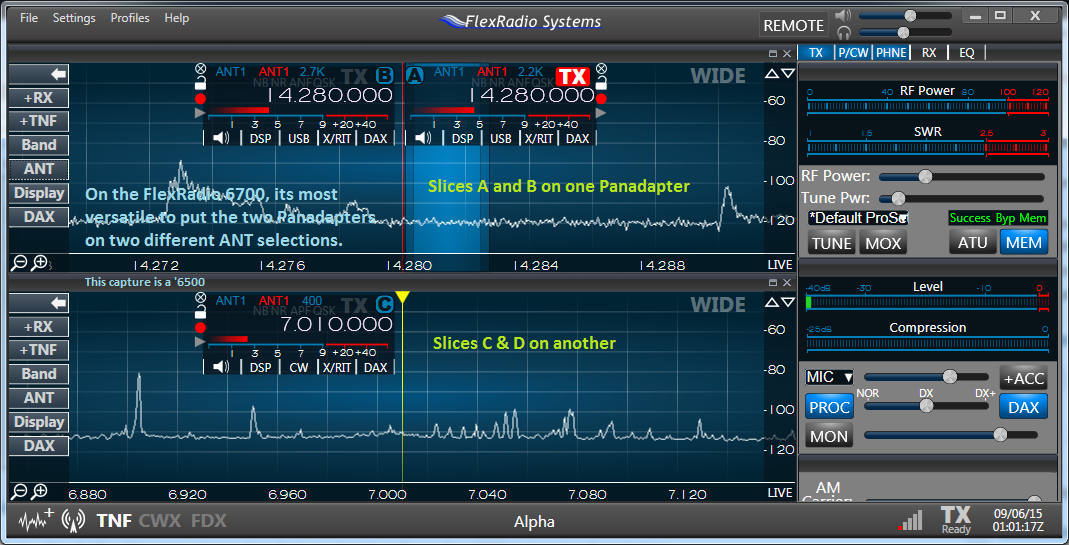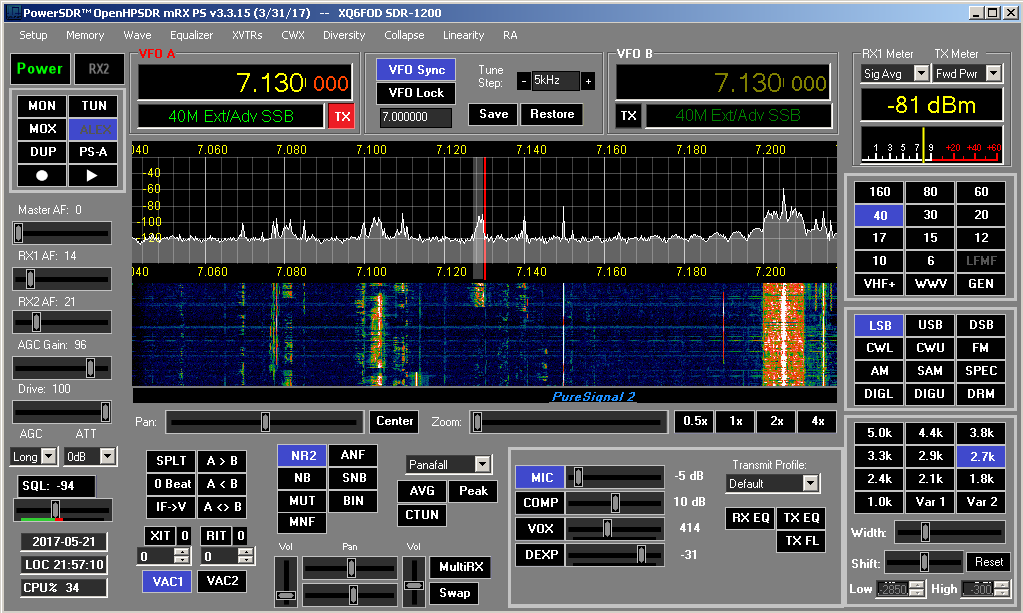
WriteLog allows its rig drivers to present to the operator what looks like two separate rigs, when there is, in fact, only one physical radio connected. This feature is not implemented on most of WriteLog’s rig drivers because it (a) requires a substantial amount of software work to construct but (b) only is useful if the rig itself is capable of simultaneous reception on two different bands at the same time. The Flex-6000’s qualify on this count. Here is how you add that capability to your WriteLog configuration. You start with WriteLog’s Setup/Ports dialog.
This is the USBIO driver for the SDR-1000 to allow for a PC USB port to connect to the SDR-1000 parallel control interface. A USBIO dongle is required. This is a 32-bit driver and will not work on 64. FlexRadio has the greatest customers in the world. The Community is the perfect place to learn from the experiences of others. Chances are your question has already been answered. Click the button below to get connected today. The most important resource I have is my time, and I don't see anything changing that would cause me to believe I won't be fixing DAX drivers again and again with the current SmartSDR architecture, unless of course I chose to not perform maintenance which from experience will bring forward other. Windows tools, drivers and other information related to making PowerSDR 1.x operate under Windows XP. Resolving Unsigned Driver Errors when Installing SmartSDR; Removing 'In Use' Com Ports for Available Com Ports; Windows Reports FlexRadio Drivers as Digitally Unsigned; See all 13 articles Other PowerGenius Products. AntennaGenius Band Changing Tutorial LAN/BCD/Pin to Port; General Information.
Drivers Flexradio Others Download
Slices A&B on a different Panadapter from Slices C&D
The key is that two rows in the dialog box both name the same FlexRadio (“Mayfield” in this case). Having done that you should configure SmartSDR to have two Panadapters.
WriteLog does not enforce the recommendation above that you create a second Panadapter, and that you place Slice A and B on one of them, and Slice C and D on the other. But this is a very strong recommendation. Why? There are several important reasons.
- The spectrum WriteLog draws on its Front Panel backgrounds comes from an IQ stream from a Panadapter. WriteLog can only draw spectrums out to half the IQ stream bandwidth from the center of the Panadapter. If you put Slices C and D on the same Panadapter as A and B, then all have to be within the same 192KHz bandwidth else at least some of the spectrums do not draw.
- All Slices on a Panadapter share their ANT setting, so to listen on one ANT while transmitting on the other, the Transmit Slice (with the bright red TX indicator like in the capture above) must be on a different Panadapter than the receive Slice. FlexRadio has announced software upgrades to enable full duplex (listen while transmit) operation. But that can only happen on two different antennas.
- This gets even more important if you have a Flex-6700, which has two independent receiver chains. More about that later.

Operating two Panadapters concurrently on different bands?
This recommendation to separate Slices A&B onto a different Panadapter from Slices C&D does not mean those two Panadapters should or should not be on different ham bands. For all Flex-6000 models and all antenna configurations, there is no performance degradation operating the two Panadapters on the same ham band. Successfully operating two Panadapters concurrently on different ham bands depends on
- on which Flex model you have
- whether the antennas you have connected to the Flex’s ANT connector(s) are single band or multi-band antennas
- whether you can do without the bandpass filters in the ‘6500 when multi-band receive forces it into its WIDE mode. This can be important if you are operating SO2R with another radio besides your Flex.

The final posting on use of a second radio discusses these trade-offs in more detail.
Here is what the dataflow of the integrated WriteLog/SmartSDR/FlexRadio system looks like, and how to set WriteLog’s dialogs appropriately.
Drivers Flexradio Others Access
Do not overlook these details:
- The Entry Window corresponding to Slices C and D should be set using WriteLog’s menu Radio/This-Window-Is/Radio-3. Why? Because WriteLog will move the Active indicator within SmartSDR only if its corresponding Entry Window has a designation of one of L/R/3/4. (The Active indicator is the yellow bar that control which Slice the FlexControl knob will tune when it is turned.) You really want WriteLog to move that Active indicator correctly.
- Why does it need to be 3 and not L or R? This is because I chose at this point in the discussion to add in the ability of WriteLog to route audio to a recording file, and also from the station microphone connected to the PC instead of directly to the Flex. When WriteLog controls any of its various multi-radio options that only expect two-choices: CW keyer L/R selection, the microphone routing to L/R rig, and the headphone routing for L/R rig, WriteLog treats the 3 (and 4) rigs just like R. So when you switch WriteLog’s transmit or receive focus between the R window and the 3 window, nothing changes in the CW keyer, or mic or headphone routing.
- In the picture that both the station microphone and the shack headphones are no longer connected to the Flex front panel, but are instead connected to physical Windows Recording and Playback devices, respectively. This enables WriteLog to record both all your transmitted audio as well as all received audio. Use WriteLog’s Sound board mixer control to set up which Windows devices are used, and use WriteLog’s Setup/Sound-board-options to turn on Echo Mic and Continuous Record.
- This picture shows the FlexRadio’s audio output connected to a physical Recording device. That sound makes it to the WriteLog mixer via a cable connection from the Flex (ACC jack in this picture, but the SPEAKER works as well) to a physical Recording Device on the PC. There are alternative sound routing configurations involving use of the DAX RX Audio devices in WriteLog’s Mixer, rather than requiring this additional cable between your Flex and your PC. However these features won’t work via DAX RX audio:
- none of the DAX RX audio streams from the radio include CW Sidetone.
- The radio’s Audio Pan/Gain controls only the audio via its HEADPHONES/SPEAKER/ACC and not the DAX channels.
- For digital mode operation, the number of MMTTY decoders running is expanded to four. (Not shown is that you need four RttyRite windows to go with them.) You can have one on each Slice, decoding from the four DAX RX 1 through 4 channels. Two of them must be RttyRite “clone Windows” because WriteLog will only command the first two into transmit mode.
Drivers Flexradio Others Support

Drivers Flexradio Others Wanted
This configuration gives a lot of versatility, but, by my own definition of the term, this is not SO2R. For Single Operator 2 Receiver operation, my definition requires being able to transmit on one antenna while simultaneously receiving on another. Read the next post to see a way to add that.